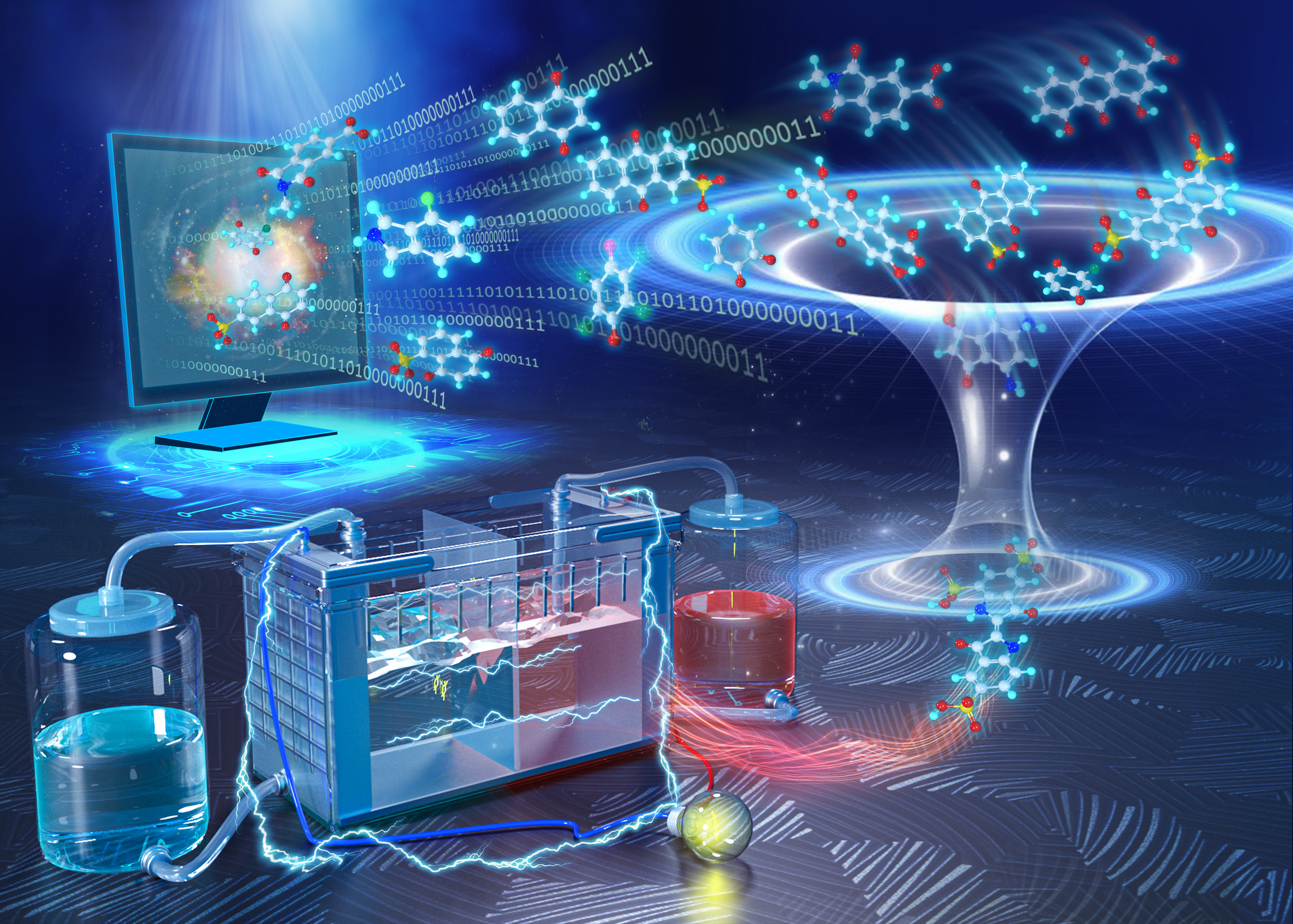Scientists from the Dutch Institute for Fundamental Energy Research (DIFFER) have created a database of 31,618 molecules that could potentially be used in future redox-flow batteries. These batteries hold great promise for energy storage. Among other things, the researchers used artificial intelligence and supercomputers to identify the molecules' properties. Today, they publish their findings in the journal Scientific Data.
In recent years, chemists have designed hundreds of molecules that could potentially be useful in flow batteries for energy storage. It would be wonderful, researchers from DIFFER in Eindhoven (the Netherlands), imagined if the properties of these molecules were quickly and easily accessible in a database. The problem, however, is that for many molecules the properties are not known. Examples of molecular properties are redox potential and water solubility. Those are important since they are related to the power generation capability and energy density of redox flow batteries.
Step 1: 31.618 virtual variants
To find out the still-unknown properties of molecules, the researchers performed four steps. First, they used a desktop computer and smart algorithms to create thousands of virtual variants of two types of molecules. These molecule families, the quinones and aza aromatics, are good at reversibly accepting and donating electrons. That is important for batteries. The researchers fed the computer with backbone structures of 24 quinones and 28 aza-aromatics plus five different chemically relevant side groups. From that, the computer created 31,618 different molecules.
Step 2: 300 properties
In the second step, the researchers used supercomputers to calculate nearly 300 different properties of each molecule. The computer uses equations from quantum chemistry to do this. Because these formulas are difficult to solve, a powerful supercomputer is handy in use.
Article continues below image.

Step 3: solubility
In the third step, the researchers used machine learning to predict whether the molecules would be dissolvable in water.
Step 4: database
The fourth and final step consisted of creating a both human- and machine-readable database. The database, called RedDB (from Redox DataBase), contains the molecules and their properties with convenient naming and description.
"When you work with theoretical models and machine learning, you obviously want to be confident in the results," says Süleyman Er, the leader of DIFFER's Autonomous Energy Materials Discovery research group. "This is why we used computer programs that have proven their excellence. For this purpose, we also implemented dedicated validation procedures."
Now that the database is public, researchers, including those outside DIFFER, can easily search for potentially interesting molecules for redox flow batteries. For instance, they can simply purchase or synthesize the molecules and research them further. Moreover, the researchers may use the database to improve their machine-learning models to speed up the design of high-quality molecules for energy storage.
Scientific paper
Elif Sorkun, Qi Zhang, Abhishek Khetan, Murat Cihan Sorkun & Süleyman Er. RedDB, a computational database of electroactive molecules for aqueous redox flow batteries. In: Scientific Data, 28 november 2022. [original (open access) / preprint]
Dutch original / this English translation / image in high resolution
Go to the News page.